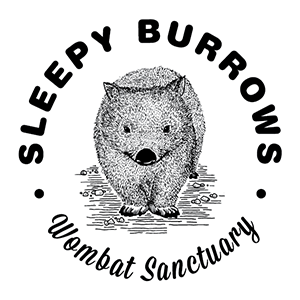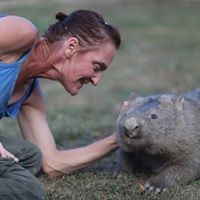About
Meet the Wombat Warrior
Donna Stepan OAM* is the proud operator of Sleepy Burrows Wombat Sanctuary.
The sanctuary, which is situated on acreage near the idyllic village of Gundaroo (NSW), was established in 2004.
Donna dedicates her life to the welfare and conservation of Australia’s Bare Nosed wombat (Vombatus ursinus), which frequents southeastern Australia and Tasmania.
A day in the life of the wombat warrior typically starts at 6am (no later) and ends well into the evening.
The day involves feeding, medicating and nurturing multiple wombats (young and old), in care and in the wild – not to mention maintenance tasks and capital works at the sanctuary.
Donna is also called out regularly to collect injured and orphaned wombats. Put simply, life at Sleepy Burrows is hectic!
* Order of Australia Medal recipient, 2017
Sleepy Burrows is a registered charity
Sleepy Burrows Sanctuary Incorporated (ABN: 38 586 315 440) is registered with the Australian Charities and Not-for-profits Commission (ACNC).
Contributions of $2 AUD or more are tax deductible in Australia.
Fun facts about Wombats
Wombat poo
Wombat poo is cube-shaped (strange, but true).
Wombat Day
October 22 is World Wombat Day.
Many Wombats
A group of wombats is called a wisdom.
Family
The wombat is related to the native koala.
Backsides
Wombats have tough backsides that are used as protection against predators and when fighting.
Size
A mature wombat typically weighs between 32 and 40 kilograms.
Digging
Wombats are amazing diggers, with the ability to excavate 3 feet of dirt in a day.
Noses
The Bare Nosed wombat (Vombatus ursinus) has a bare nose, rather than a hairy one.
Speed
Adult wombats have a top running speed of 40 km/h (faster than an Olympic sprinter like Usain Bolt).
Behaviour
Despite their cuddly, docile appearance, wombats are highly-intelligent animals that value their independence and mark their territory. Wombats are not a force to be reckoned with and should always be admired from a distance.
Joeys
A mature female wombat (Vombatus ursinus) has a backwards-facing pouch and produces a joey (baby wombat) approximately every 2 years.
Eating
Wombats are herbivores and have slow metabolisms (a meal usually takes 14 hours to digest).

